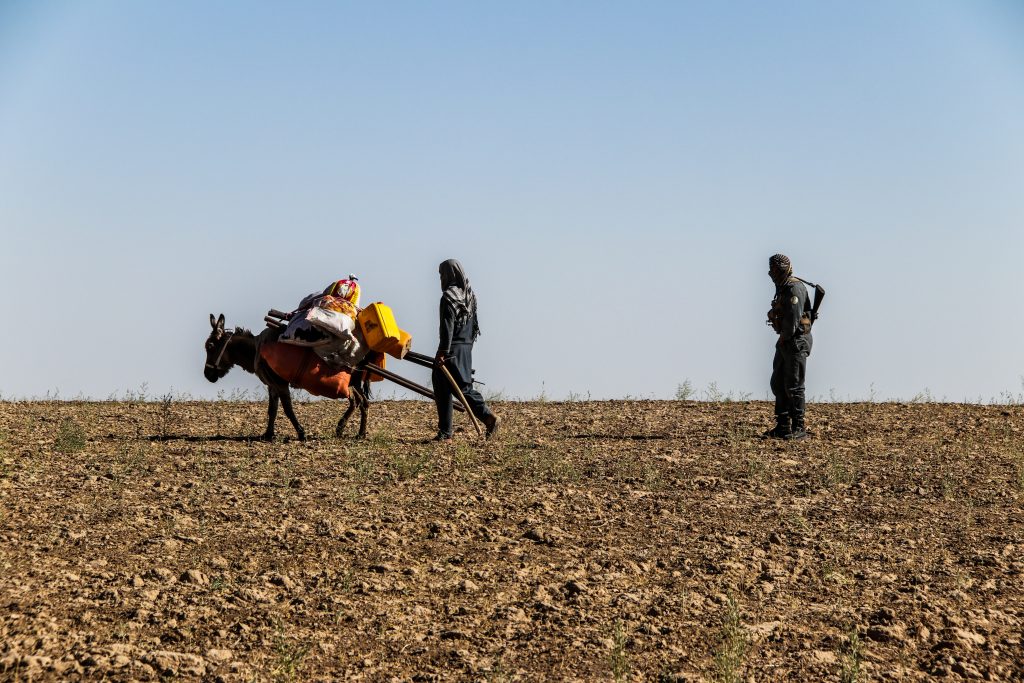Afghanistan’s Outlook: Under Taliban Rule, the Economy Slumps as Taxation Income Rises
Two years after the Taliban swept to power, other international crises have distracted attention from Afghans’ suffering amid the country’s dire socioeconomic conditions. Looking ahead, what are the economic prospects for Afghanistan under the Taliban?
When the Taliban seized power in August 2021, their regime faced three distinct challenges: first, the huge economic and humanitarian crisis; second, the need to establish an inclusive and functioning governance system, and finally to gain international recognition. While ‘good governance’ was not expected of the group that fought a 20-year insurgency, the Taliban has seemingly failed to meaningfully tackle any of the three crises.
Prior to the Taliban takeover, the nation was already unstable as reflected in the 2022 Bertelsmann Transformation Index (BTI) for Afghanistan, which gave the country a ‘weak’ categorization for Governance Index. BTI’s 2022 Political Transformation index for Afghanistan stands at just over 3 points out of 10 points, down from 4.36 in 2020. Similarly, in 2022, BTI’s Economic Transformation index gave Afghanistan a score of 2.75 points out of 10 points, making the country a ‘rudimentary’ economy.
Nonetheless, building on its long history of taxation during the insurgency, the Taliban has managed to increase their regime’s income through taxes including retrospective taxation on assets and properties. Research suggests that Afghans view the notion of ‘tax’ as an amalgamation of all payments they must make to the Taliban authorities: income tax, fees for various kinds of licenses from vehicles to shops and businesses, and municipality taxes. This taxation places a heavy burden on citizens. Amid the collapsing economy, many people have become unemployed, and taxation adds to the considerable challenges facing workers. Between March 2022 and March 2023, the Taliban regime generated around US$ 2.2 billion in revenue, according to the World Bank. This impressive performance, despite the shrinking national economy and absence of foreign development aid, is in large part because of the Taliban’s effective tax collection at Afghanistan’s borders. The former Afghan Islamic Republic in its latter years received up to 40 percent of its GDP through foreign aid. As a land-locked country, Afghanistan relies on an artery of transport links connecting it to the neighboring countries that provide transit routes for imports and exports, particularly through Pakistan and Iran.
Taxation continues, Taliban clampdown on some forms of corruption
Taliban authorities continue to present their ability to generate higher revenue despite unfavorable circumstances and international sanctions as evidence that they have eradicated the endemic corruption of the previous Afghan government. There is certainly evidence that the Taliban has cracked down on some – if not all – forms of corruption, such as the administration of the state institutions which were previously riddled with bribery.
For over a century, successive Afghan rulers have relied on foreign aid. The current Taliban regime is a historical peculiarity because it does not have any formal foreign aid dependency. However, the population is in dire straits: Nearly 30 million Afghans out of a total population of approximately 41 million people are in need of humanitarian assistance. International humanitarian assistance flows through the humanitarian sector organizations, both international and local, in coordination with the United Nations in Afghanistan. This humanitarian assistance is insulated from the Taliban regime. However, due to the effective collapse of the domestic economy amid the international sanctions remain, the overall economic woes look set to persist. This situation is made worse by restrictions on the Afghan banking sector as a result of the sanctions. Remittances and international transactions flow mostly through informal channels for the transfer of money.
Levels of severe poverty are increasing
Following the Taliban’s takeover of power in August 2021, opium cultivation increased by 32% according to the United Nations Office on Drugs and Crime (UNODC). As a result, farmers’ income from the poppy harvest grew to US$ 1.4 billion in 2022, compared to US$ 425 million in 2021. In April 2022, however, the Taliban supreme leader issued an edict banning poppy cultivation. A year later, satellite imagery indicates an almost complete termination of opium poppy cultivation in major provinces such as Helmand which usually provides 50% of the total cultivation capacity. The ban will have significant negative consequences for the farmers and their families who struggle to generate similar incomes through alternative crops like wheat. Poverty levels in Afghan rural areas were persistently higher than in urban areas over the past decades. Since 2001, this was mainly because of access issues due to security problems in rural regions, and wealth concentration in urban centers also excluded areas outside main cities. However, increasing levels of severe poverty across the country mean such an urban-rural divide is diminishing fast. Farmers losing income will certainly lead to more internal displacements and possibly outward migratory movements.
Although inflation and commodity availability – especially food items and domestic agricultural produce – have fared as badly as initially feared, there are other worrying trends. These include: the rise of extreme poverty among all segments of society and the decimation of the urban middle classes due to loss of income. The stability of Afghani – the domestic currency – is connected to the physical shipment of limited cash dollars while the country’s assets remain frozen, mostly in the United States. The Taliban regime is reportedly allocating over 50 percent of its revenue to the security sector ministries, ostensibly prioritizing building its military capabilities.
In the immediate to near future, the current economic crisis in Afghanistan is unlikely to ease if the domestic and international contexts remain unaltered. The same applies to the political and diplomatic isolation of the Taliban regime. The Taliban have seemingly tried all avenues of regional cooperation. This has led to some photo-opportunities, for example, with the Chinese government among others. But international sanctions have clipped the wings of the Taliban regime, particularly the ban/restrictions on the Afghan banking sector which hurts both the Taliban regime and also the Afghan private sector business community. Taliban leaders, despite reported internal rifts, have persistently worked for self-preservation and unity against threats. The regime will vigorously pursue revenue generation through taxation and customs. It is unlikely that the revenues will be diverted from the Taliban’s priority for strengthening security and military capacities to civilian projects. The much-needed international humanitarian assistance must continue. However, in the absence of a functioning economy, no matter how frail, international sanctions and turning Afghanistan into a pariah country hurt ordinary Afghans. This underscores a key dilemma. The current status quo in Afghanistan is unsustainable in the long run. The Taliban regime cannot fill the economic void domestically or resume developmental projects without external support. Arguably, this leaves the Taliban in a fix: if it tries to establish a functioning and stable government by cooperating with the West, it will alienate its hardcore supporters. However, given that both sides are reluctant to lose face by agreeing to any fruitful cooperation, the humanitarian situation looks set to remain precarious.

